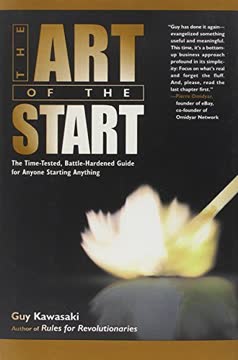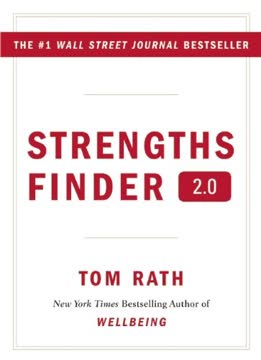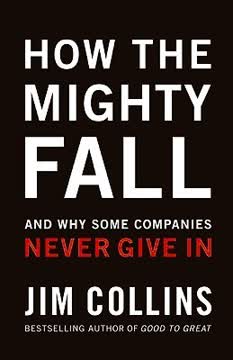Key Takeaways
1. Discover and leverage your unique strengths for success
The real tragedy of life is not that each of us doesn't have enough strengths, it's that we fail to use the ones we have.
Strengths are the foundation of excellence. Each person possesses a unique combination of talents, skills, and knowledge that, when properly leveraged, can lead to exceptional performance. By identifying and focusing on these strengths, individuals can achieve greater success and fulfillment in both their personal and professional lives.
Recognizing strengths requires self-awareness. To discover your strengths, pay attention to:
- Activities that energize and engage you
- Tasks you learn quickly and excel at naturally
- Areas where you consistently receive positive feedback
- Moments when you feel most authentic and in flow
By aligning your career and life choices with your innate strengths, you can maximize your potential and contribute more effectively to your organization and community.
2. Focus on developing talents into strengths, not fixing weaknesses
Devoting too much time to overcoming your weaknesses prevents you from reaching your potential.
Strengths-based development yields better results. Traditional approaches often emphasize fixing weaknesses, but this strategy is inefficient and often demotivating. Instead, organizations and individuals should focus on identifying and cultivating natural talents into strengths.
Talents vs. skills and knowledge:
- Talents: Naturally recurring patterns of thought, feeling, or behavior
- Skills: The steps of an activity that can be transferred to others
- Knowledge: What you know, either factually or from experience
While skills and knowledge can be acquired, talents are innate and provide the greatest potential for growth. By investing time and effort into developing talents, individuals can achieve:
- Higher levels of performance
- Increased engagement and job satisfaction
- Greater resilience and adaptability
Rather than trying to become well-rounded, strive to become exceptional in areas where you have natural talent.
3. Use the StrengthsFinder assessment to identify your top five talents
StrengthsFinder's purpose is to highlight your dominant patterns of thought, feeling, or behavior.
The StrengthsFinder assessment is a powerful tool for self-discovery. Developed by Gallup, this online assessment helps individuals identify their top five talent themes out of a possible 34. These themes represent areas where a person has the greatest potential for building strengths.
Key features of the StrengthsFinder assessment:
- 177 paired statements, each requiring a 20-second response
- Measures the intensity of talents across 34 themes
- Provides personalized results highlighting your top five themes
Understanding your Signature Themes allows you to:
- Focus your personal and professional development efforts
- Make more informed career decisions
- Communicate your strengths to others more effectively
- Build complementary partnerships with colleagues
By using the StrengthsFinder assessment as a starting point, you can begin to craft a more fulfilling and successful life based on your natural talents.
4. Understand the 34 talent themes and how they manifest
Your talents, your strongest synaptic connections, are the most important raw material for strength building.
The 34 talent themes provide a common language for strengths. Each theme represents a distinct pattern of thought, feeling, or behavior that can be productively applied. Understanding these themes helps individuals and organizations recognize and leverage diverse talents.
Examples of talent themes:
- Achiever: Drive and constant need for accomplishment
- Adaptability: Ability to flexibly respond to changing circumstances
- Analytical: Objectivity and data-driven decision-making
- Empathy: Ability to sense and understand others' emotions
- Strategic: Ability to spot patterns and create alternative scenarios
By familiarizing yourself with all 34 themes, you can:
- Better understand your own strengths and those of others
- Appreciate the diverse talents within teams and organizations
- Identify complementary partnerships and collaborations
- Tailor communication and management styles to different individuals
Recognizing that each person's talent profile is unique helps foster a more inclusive and productive work environment.
5. Tailor your management style to each employee's strengths
The best managers play chess, not checkers.
Individualization is key to effective management. Great managers recognize that each employee is unique and requires a tailored approach. By understanding and leveraging individual strengths, managers can maximize performance and engagement.
Strategies for strengths-based management:
- Learn each employee's Signature Themes
- Assign tasks and roles that align with natural talents
- Provide feedback and recognition in ways that resonate with each individual
- Adapt communication styles to match employees' preferences
- Create opportunities for employees to use their strengths daily
By focusing on strengths rather than trying to fix weaknesses, managers can:
- Increase employee productivity and job satisfaction
- Reduce turnover and absenteeism
- Foster a more positive and collaborative work environment
- Drive overall organizational performance
Remember that managing to strengths doesn't mean ignoring weaknesses entirely, but rather finding ways to minimize their impact while maximizing the potential of each employee's talents.
6. Build a strengths-based organization through strategic hiring and development
Each person's talents are enduring and unique.
A strengths-based approach should permeate the entire organization. From recruitment to talent development, organizations can create a culture that values and leverages individual strengths to drive overall success.
Key elements of a strengths-based organization:
- Talent-based hiring processes
- Onboarding programs that emphasize strengths discovery
- Performance management systems focused on strengths development
- Career paths that allow for growth within areas of natural talent
- Leadership development programs that cultivate strengths-based management
Benefits of a strengths-based organizational culture:
- Increased employee engagement and retention
- Higher levels of productivity and innovation
- Improved customer satisfaction and loyalty
- Enhanced ability to attract top talent
- Greater overall organizational resilience and adaptability
By consistently applying strengths-based principles throughout the employee lifecycle, organizations can create a sustainable competitive advantage.
7. Implement a performance management system that emphasizes strengths
The best way to lead people is to lead by expectation, not by personality.
Effective performance management focuses on outcomes, not processes. Instead of trying to force all employees into a single mold, strengths-based performance management systems allow for individual approaches to achieving desired results.
Components of a strengths-based performance management system:
- Clear, measurable performance expectations
- Regular feedback and coaching focused on leveraging strengths
- Recognition and rewards aligned with individual motivations
- Development plans that emphasize growth in areas of natural talent
- Performance evaluations that consider both results and strengths utilization
By shifting from a deficit-based to a strengths-based approach, organizations can:
- Increase employee motivation and engagement
- Improve overall performance and productivity
- Foster a culture of continuous improvement
- Reduce stress and burnout associated with traditional performance management
Remember that the goal is not to ignore areas for improvement, but to achieve results by maximizing each employee's unique potential.
8. Create a balanced scorecard to measure employee success holistically
You can't improve what you don't measure.
A balanced scorecard provides a comprehensive view of performance. By measuring success across multiple dimensions, organizations can ensure that employees are contributing to overall goals while leveraging their individual strengths.
Key components of an employee balanced scorecard:
- Business results: Quantifiable outcomes related to specific job responsibilities
- Customer impact: Measures of customer satisfaction and loyalty
- Employee engagement: Indicators of job satisfaction and commitment
- Learning and growth: Progress in developing strengths and acquiring new skills
Benefits of using a balanced scorecard approach:
- Aligns individual performance with organizational goals
- Provides a more nuanced understanding of employee contributions
- Encourages a focus on both short-term results and long-term development
- Facilitates more meaningful performance conversations
By implementing a balanced scorecard system, organizations can create a more holistic and strengths-based approach to performance management, ultimately driving both individual and organizational success.
Last updated:
FAQ
What's Now, Discover Your Strengths about?
- Focus on Strengths: The book emphasizes identifying and developing individual strengths rather than focusing on weaknesses. It introduces strengths-based psychology, a shift from traditional methods that prioritize fixing flaws.
- Clifton StrengthsFinder: It includes access to the Clifton StrengthsFinder assessment, a tool to help readers identify their unique talents and strengths for personal and professional development.
- Strengths Revolution: The authors advocate for a "strengths revolution" in organizations, suggesting that companies should build their cultures around the strengths of their employees to enhance productivity and satisfaction.
Why should I read Now, Discover Your Strengths?
- Personal Growth: The book helps you understand your unique talents and how to leverage them for success, encouraging self-awareness and self-acceptance.
- Improved Performance: It provides insights into how focusing on strengths can lead to better workplace performance, citing research on employee engagement and productivity.
- Practical Tools: Offers practical tools and frameworks, such as the StrengthsFinder assessment, to help you identify and develop your strengths effectively.
What are the key takeaways of Now, Discover Your Strengths?
- Strengths Over Weaknesses: Focus on strengths rather than weaknesses for greater fulfillment and success.
- Unique Talents: The book outlines 34 themes of talent identified through the StrengthsFinder assessment, helping individuals find roles that align with their abilities.
- Strengths-Based Organizations: Discusses how organizations can benefit from a strengths-based approach, leading to improved employee satisfaction and retention.
What is the Clifton StrengthsFinder assessment?
- Assessment Tool: An online assessment that identifies your top five dominant themes of talent, designed to help you discover your unique strengths.
- Personalized Results: Provides a personalized report detailing your Signature Themes, including descriptions and insights into how to apply these strengths.
- Actionable Insights: Offers actionable insights to guide your personal and professional development, encouraging you to focus on what you do best.
How can I apply my Signature Themes in my career?
- Leverage Strengths: Use your Signature Themes to identify roles and tasks that align with your strengths, leading to greater job satisfaction and performance.
- Seek Opportunities: Look for opportunities in your current role or organization to apply your strengths, such as new projects or responsibilities.
- Continuous Development: Continuously seek ways to develop and refine your strengths through training, mentorship, or experiences.
What are the 34 themes of StrengthsFinder?
- Diverse Themes: The book identifies 34 distinct themes of talent, such as Achiever, Activator, and Empathy, representing recurring patterns of thought, feeling, or behavior.
- Unique Combinations: Individuals can have different combinations of these themes, leading to unique strengths and helping identify roles that align with natural abilities.
- Framework for Development: The themes serve as a framework for personal development, allowing individuals to focus on enhancing strengths rather than fixing weaknesses.
How does focusing on strengths improve performance?
- Increased Engagement: Focusing on strengths leads to higher employee engagement and satisfaction, with employees feeling more fulfilled in their roles.
- Enhanced Productivity: Organizations that capitalize on employees' strengths see improved productivity and lower turnover rates, supported by research.
- Positive Work Environment: A strengths-based approach fosters a positive work environment where individuals feel valued for their unique contributions.
What are the obstacles to building my strengths?
- Self-Reluctance: Many individuals are reluctant to focus on strengths due to a long-standing emphasis on weaknesses in education and personal development.
- Cultural Norms: Cultural norms often prioritize fixing flaws over enhancing strengths, creating a skewed perspective on personal development.
- Fear of Weaknesses: Fear of confronting weaknesses can overshadow confidence in strengths, hindering the adoption of a strengths-based approach.
Can I develop new themes if I don’t like the ones I have?
- Focus on Existing Strengths: While you cannot change your inherent themes, you can develop and refine your existing strengths by enhancing related skills and knowledge.
- Manage Weaknesses: Focus on managing around your weaknesses, allowing you to maximize strengths without being hindered by areas of struggle.
- Seek Complementary Roles: Look for roles or partnerships that complement your strengths, collaborating with others who have different strengths.
How does Now, Discover Your Strengths suggest managing weaknesses?
- Focus on Strengths: Manage around weaknesses by leveraging strengths to compensate for areas where you may not excel.
- Support Systems: Create support systems or partnerships to help mitigate weaknesses, allowing you to focus on what you do best.
- Continuous Learning: Engage in learning opportunities that enhance strengths rather than remedial training aimed at weaknesses.
How can organizations create a strengths-based culture?
- Selection System: Implement a strengths-based selection system to identify and hire individuals based on their talents, ensuring a good fit for roles.
- Performance Management: Develop a performance management system that measures outcomes based on strengths, rather than a one-size-fits-all approach.
- Career Development: Create career development paths that allow employees to grow within their strengths, offering prestige and recognition for excellence.
What are some of the best quotes from Now, Discover Your Strengths and what do they mean?
- “Building on your strengths isn’t necessarily about ego. It is about responsibility.”: Emphasizes that focusing on strengths is about fulfilling one's potential and responsibilities, not self-promotion.
- “If at first you don’t succeed, try again. Then quit. There is no point making a fool of yourself.”: Highlights the importance of recognizing when to pivot and redirect efforts rather than persisting in unproductive paths.
- “To be what we are, and to become what we are capable of becoming, is the only end of life.”: Underscores the book's theme of self-discovery and the pursuit of personal excellence through understanding and applying one's strengths.
Review Summary
Now, Discover Your Strengths focuses on identifying and leveraging individual strengths rather than fixing weaknesses. Many readers found the StrengthsFinder test insightful, although some criticized its limited accessibility. The book's emphasis on personal development and career alignment resonated with many, while others found it repetitive or lacking in practical advice. Some readers appreciated the shift in perspective from traditional weakness-focused approaches, while others questioned the scientific validity of the strengths-based method. Overall, opinions were mixed, with many finding value in the core concept despite criticisms of execution.
Similar Books










Download PDF
Download EPUB
.epub digital book format is ideal for reading ebooks on phones, tablets, and e-readers.









